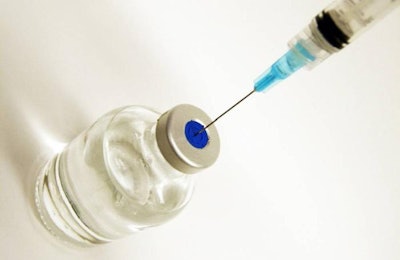
The balconies at first floor level of the London School of Hygiene and Tropical Medicine are decorated with iron representations of ticks, fleas and other parasites capable of passing infections on to man, and I always enjoy looking at them as I pass by on the bus.
There are, however, no depictions of chickens or other livestock, despite farm animals being able to make us sick, too.
This may, however, be about to change, following the announcement that the school is to start work on a new generation of inexpensive vaccines for poultry.
The London School of Hygiene is not a veterinary school, but its rationale in this case is that the vaccines that it hopes to develop will reduce foodborne infections in humans and minimize antibiotics in the food chain.
Technological breakthrough
The school notes that the most successful human vaccines that give long-lasting immunity are often glycoconjugates. However, these vaccines are complex and expensive to produce.
The good news for the livestock sector, however, is that the school’s researchers have recently developed new glycoengineering technology that facilitates the coupling of protein/sugar combinations and could lead to a new generation of inexpensive vaccines for use on farm.
A grant from the Biotechnology and Biological Sciences Research Council (BBRSC) will help the school to build on its technology.
Brendan Wren, professor of microbiology at the school, explains that the newly funded work will facilitate the school’s glycoengineering to produce glycoconugate vaccines that would simultaneously protect poultry against clostridia, Salmonella and Campylobacter infections and, subsequently, reduce the incidence of food poisoning in humans.
Surprising origins?
Today’s research center grew out of the Seaman’s Hospital Society, established in the 19th century “for the assistance and relief and helpless seamen,” who, returning from the far flung corners of the world, sometimes brought exotic diseases with them.
Its focus may now broadened from tropical parasites to chickens, cattle, sheep and goats, but if we think of how much of the population falls ill due to food poisoning each year, and the pressing need to slow the march of antimicrobial resistance, this project makes sense.
By way of example, look at statistics published by the UK’s Food Standards Agency (FSA) in 2014. They revealed that there were 280,000 cases of food poisoning in the country attributable to Campylobacter, while Salmonella was responsible for the most hospitalizations – about 2,500.
Poultry meat, the FSA said, was the food linked to the most cases of food poisoning, with a connection to an estimated 244,000 cases every year.
And that this work to develop vaccines for poultry and other animals comes out of a primarily human research center, simply underlines the close link that exists between human and animal health.

















